Description
Buy Wavy Caps Magic Mushroom Online.
Wavy Cap Mushrooms (Psilocybe Cyanescens)
Buy Wavy Caps Magic Mushroom Online. Wavy cap mushrooms (Psilocybe cyanescens), also known as “wavy caps”, are a highly potent species of psilocybin mushroom. They are known as “blueleg brownie mushrooms” in the UK. The name “blueleg” part of the name comes from the fact that the stem bruises blue when handled, while the “brownie” part refers to the brown color of the cap.
Wavy caps may not be as commonly used as other types of psilocybin mushrooms, such as Psilocybe cubensis and its varieties, but many users seek them out for their high potency.
In this guide, we will be covering everything you might want to know about these mushrooms, including:
- How to identify wavy cap mushrooms and wavy caps lookalikes
- How to grow wavy cap mushrooms (as well as where to find wavy cap spores and tips on growing Psilocybe cyanescens outdoors)
- Potency
- Dosage
- Wavy caps effects
As always, you should be aware of the law surrounding psilocybin mushrooms where you live, as mushrooms containing this psychedelic compound are illegal in most countries around the world. If you want to grow and possess wavy caps, you need to be aware of the legal risks involved.
Identifying Wavy Caps And Wavy Caps Lookalikes
It should first be noted that wavy caps grow in the wild. If you want to source them by picking them (rather than buying them from someone), you need to know what they look like.
After all, wavy cap mushrooms have some lookalikes that you definitely don’t want to pick and eat. Some of these are highly poisonous and eating them can make you feel very sick and, if not treated quickly, may be fatal.
Where Do Wavy Caps Grow?
The first step in identifying wavy caps in the wild is knowing where they grow. We can answer this question in two ways: by describing the kind of habitat you’ll find them in and by highlighting the countries — and the specific locations in those countries — where wavy caps grow.
Habitat
Psilocybe cyanescens grows primarily on wood chips, especially in and along the perimeter of mulched plant beds in urban areas. However, it can also grow on other lignin-rich substrates (lignin is an organic compound that strengthens the cell walls of plants, and is naturally produced in particular by woody plants).
Wavy cap mushrooms do not grow on substrate that is not lignin-rich. The mushrooms have been found in natural settings before (although most appear to be migrations from mulched plant beds). It is not typical for the species to grow on mulch made from bark.
Distribution
In the United States, Psilocybe cyanescens occurs mainly in the Pacific Northwest, but they can also be found in the San Francisco Bay Area, including in Golden Gate Park. You can also find these mushrooms in New Zealand, Western Europe, Central Europe, and parts of Western Asia such as Iran.
The range in which Psilocybe cyanescens grows is rapidly expanding, particularly in regions where it is not native, as the use of mulch to control weeds has become widespread. Wavy cap mushrooms have also been documented to fruit in Spring on the East Coast of the United States.
Although it has been believed that Psilocybe cyanescens’ native habitat is the coniferous woodlands of the north-western United States or coastal dunes in the Pacific North West, mycologist Elise Wakefield observed this mushroom growing in London’s Kew Gardens, which she described in 1942. An estimated 100,000 specimens have also been found growing on a racetrack in the south of England.
Fruiting occurs when the temperature in the area drops. In the San Francisco Bay Area, this means fruiting will tend to happen between late October and February, with fruiting in other areas usually occurring in fall.
How To Identify Wavy Cap Mushrooms
You’ll be able to identify wavy caps by knowing the distinctive features of the mushroom, which are as follows:
- Cap (pileus). Caramel to chestnut-brown when moist, fading to pale buff or slightly yellowish when dried. The caps measure from 1.5-5 cm across and are distinctly wavy in maturity (hence the name wavy caps). The color of the cap is rarely seen in mushrooms other than Psilocybe cyanescens. The cap can stain blue when touched or otherwise disturbed. The caps are sticky to the touch, owing to an outer gelatinous layer called a pellicle.
- Gills (lamellae). The gills underneath the cap are adnate (broadly attached to the stem), and light brown to dark purple in maturity with lighter gill edges. The gills, like the cap, can stain blue if touched.
- Veil. The mushroom has a cobweb-like partial veil that peels away as the cap matures and expands, leaving an annular zone around the stem that is sticky and often turns purple-black due to the presence of spores.
- Stem (stipe). Fibrous, white when young, turning grey-brown as the mushrooms mature.
- Odor and Taste. Farinaceous (“flour-like”).
Wavy Caps Lookalikes
Psilocybe cyanescens has some lookalikes that you should be aware of. The ones that should cause caution are species from the genus Galerina, which can be deadly due to the presence of amatoxins (poisons unique to fungi).
After ingesting amatoxins, people may feel sick within a couple of hours, then recover a few hours later, whereas others experience no symptoms at all. During this time, however, the amatoxins begin causing damage to the liver and kidneys. If individuals don’t receive treatment, then around two days after the poisoning, they can start to feel weak, then very ill, and soon after that, experience organ failure.
Galerina species, such as Galerina marginata (also known as deadly skullcap, autumn skullcap, or deadly galerina), resemble young specimens of Psilocybe cyanescens with their caramel-brown cap. The difference is that they have a brown stem with an annulus. They are poisonous and potentially deadly, as they contain amatoxins.
Other species considered wavy caps lookalikes are from the genera Cortinarius, Hypholoma, and Leratiomyces.
Cortinarius species are reported as lookalikes as some of these species have a blue coloring that fades over time, resembling blue bruising, while some (e.g. Cortinarius obtusus, Cortinarius rubellus) have a brown cap.
You definitely don’t want to eat the fairly rare but deadly Cortinarius rubellus (aptly named the “deadly webcap” mushroom). This is one of the world’s most poisonous mushrooms, as it contains the highly toxic compound orellanine, which can destroy the kidneys and liver. After consuming this mushroom, it can take up to two weeks for any symptoms to appear, by which time the damage has already been done.
Less poisonous but noteworthy mushrooms are Hypholoma species, which can also look similar to Psilocybe cyanescens. However, they grow in dense clusters, which is uncharacteristic of Psilocybe species. They tend to have brown caps with white stems and a purple-black spore print, and some can be poisonous.
How To Grow Wavy Cap Mushrooms
Growing Psilocybe cyanescens involves the same process as growing any other type of magic mushroom. You should refer to our guide on how to grow magic mushrooms at home for detailed instructions, but let’s offer a quick summary of everything you need and the steps you should take.
Wavy Cap Spores
First, you need to source some Psilocybe cyanescens spores. These are the reproductive cells that allow the mushroom to grow. Magic mushroom spores do not contain psilocybin, so they are not themselves illegal. But once they germinate and begin producing mycelium, psilocybin will be produced, making the end product illegal (since psilocybin is a controlled substance in most countries).
However, magic mushroom spores are illegal in California, Georgia, and Idaho. In the other 47 states, you’re free to buy and possess them.
There are different ways to get wavy cap spores.
One way is to extract your spores from the mushrooms themselves. The more popular option, though, is to buy them online from a vendor selling a spore syringe or print. The spore syringe is an oral syringe that contains just water and the wavy cap spores, while spore prints are little pieces of paper with the spores stamped onto them. The prints are dried and need to be rehydrated when you want to use them.
Steps For Growing Wavy Caps
It’s best to use our detailed guide for following the steps for growing wavy caps. You need the right ingredients, equipment, and hygiene supplies before getting started. The necessary steps will then be:
- Preparing the jars
- Inoculation
- Colonization
- Preparing the grow chamber
- Fruiting
- Harvesting
- Drying the mushrooms for long-term storage
Growing Psilocybe Cyanescens Outdoors
Our guide on growing magic mushrooms focused specifically on doing so at home. Yet growing wavy caps at home can be challenging, as these mushrooms require some specific conditions. But under the right climatic conditions, they can easily grow outdoors. If you want to grow wavy caps outdoors, you need to keep certain things in mind.
Psilocybe cyanescens grows on hardwoods such as Alder chips (Alnus rubra) and other woody mulches. These mushrooms will easily grow in urban garden beds mulched with a variety of wood chips. They like shady areas with good moisture, and are known to grow near rhododendrons, rose bushes, and azaleas.
Potency
As stated at the beginning of this article, Psilocybe cyanescens is a highly potent species of psilocybin mushroom. It is one of the most potent magic mushrooms, in fact. This is due to its high concentration of psychedelic alkaloids.
To get a sense of its potency, let’s take a look at the concentrations of psilocybin and psilocin in a few different species:
- Blue Angel (Psilocybe azurenscens): 1.78 percent psilocybin and 0.38 percent psilocin
- Liberty Cap (Psilocybe semilanceata): 0.98 percent psilocybin and 0.2 percent psilocin
- Wavy Cap (Psilocybe cyanescens): 0.85 percent psilocybin and 0.36 percent psilocin
- Magic Truffles (Psilocybe tampanensis): 0.68 percent psilocybin and 0.32 percent psilocin
- Golden Teacher (Psilocybe cubensis): 0.63 percent psilocybin and 0.60 percent
Because of their potency, flying saucer mushrooms are a popular option for microdosing — since you need a very small dose to achieve the intended effects.
Dosage
Because wavy caps are potent, you will need to take a lower dosage compared to less potent magic mushrooms, assuming you want to get the same intensity of effects.
For example, Erowid lists the following dosages for Psilocybe cubensis, a medium strength psilocybin mushroom:
- Threshold: 0.25 g
- Light: 0.25-1 g
- Common: 1-2.5 g
- Strong: 2.5-5 g
- Heavy: 5+ g
Based on the average psilocybin and psilocin content of wavy caps, it is generally recommended to take two-thirds the normal dose of Psilocybe cubensis.
Other websites have their own Magic Mushroom Dosage Calculators, which can tell you how many grams of a particular species of magic mushroom you should consume based on how intense you want the experience to be.
With this in mind, as well as Erowid’s dosage recommendations for Psilocybe cubensis, the following dosages for wavy cap mushrooms are a good rule of thumb:
- Threshold: 0.15 g
- Light: 0.15-0.65 g
- Common: 0.65-1.5 g
- Strong: 1.5-3.3 g
- Heavy: 3.3+ g
Wavy Caps Effects
When consuming wavy cap mushrooms, you can experience a range of perceptual, emotional, physical, and mystical effects. They also vary depending on your set and setting, and the dosage you take.
Let’s look at the kind of experience you can expect from different dosages:
Low Dose Wavy Caps Effects (0.15-0.65 g)
Perceptual effects
- Colors become slightly brighter
- The edges of objects appear more distinct
- Things look as if they’re in high definition
- The features of objects moving slightly
- Music and external sounds have a different quality to them
Emotional effects
- Positive mood
- Calmness
- Anxiety
- Increased appreciation for music
Physical effects
- A slight feeling of nausea
- Dilated pupils
- Increase heart rate, blood pressure, and temperature
- A light body high
Medium Dose Wavy Caps Effects (0.65-1.5 g)
Perceptual effects
- Colors become noticeably enhanced and vivid
- Objects move, morph, and “breathe”
- You can see geometric patterns overlaid on objects and the environment, as well as behind closed eyelids
- You can see tracers (trails left behind moving objects, similar to those seen in long exposure photography)
- Synesthesia: When different sense perceptions become mixed, so you can see sounds and hear colors, for example
- Sounds become noticeably distorted
Emotional effects
- Euphoria (including when listening to music)
- Empathy
- Anxiety, fear, dread, or panic
- A feeling of contentment or peace of mind
- Gratitude
- Paranoia
Physical effects
- Nausea (this feeling of uneasiness in the stomach usually only lasts at the beginning of the trip)
- Sometimes vomiting
- More dilated pupils
- A further increase in heart rate, blood pressure, and temperature
- Perspiration
- A stronger body high
- Muscle weakness
High Dose Wavy Caps Effects (1.5-3.3 g)
Perceptual effects
- Visions of imagery, scenes, and entities (both with eyes opened or closed)
- Seeing objects and people morph in intense and strange ways
- Strong geometric and fractal hallucinations
- Auditory hallucinations
Emotional effects
- Ecstasy
- Bliss
- Boundless love
- Intense feelings of gratitude
- A strong feeling of euphoria and joy when listening to music
- Intense states of dread or despair
- A feeling of sacredness
Physical effects
- Strong nausea
- A greater chance of vomiting
- An intense body high
- Loss of coordination (this is why it’s important to have a trip sitter when taking a high dose, as they can ensure that you don’t jeopardize your physical safety in any way)
A Strong Dose Of Wavy Caps Can Induce Mystical Effects
If you take a high dose of magic mushrooms, and potentially if you take a medium dose, you can experience mystical effects, which classically include:
- A feeling of unity (also known as oneness)
- Noetic quality. The feeling of gaining insightful knowledge, experienced at an intuitive level. You may have the sense of encountering ultimate reality
- A sense of sacredness or reverence
- Positive mood. Feelings of peace, tranquility, ecstasy, awe, or joy
- Transcendence of time and space. You may have the sense of being “outside time”, being in a realm with no spatial boundaries, or existing in a timeless state
- Ineffability. The feeling that you cannot adequately describe the experience in words
Duration Of Wavy Caps Effects
A wavy cap mushroom trip will generally last between 4-6 hours. This duration is pretty consistent. In clinical trials involving psilocybin, most sessions will last up to six hours. After this time, the participants will no longer experience any psychedelic effects.
But the duration of a psilocybin experience for any individual depends on a few factors:
- Dosage. Taking a low dose of magic mushrooms could result in a trip lasting only a few hours, whereas consuming a high dose could lead to a six-hour experience.
- Method of Consumption. It takes around 30 minutes for shrooms to kick in. But you can quicken this process through lemon tekking — it is believed the citric acid in the lemon juice breaks down the mushroom material, saving your body some time it would otherwise spend breaking it down. The lemon tek method may result in a faster onset and a stronger and shorter journey than eating dried mushrooms as they are.
- Eating psilocybin mushrooms on an empty stomach can lead to a faster onset than consuming them on a full stomach.
- Cannabis may elongate a magic mushroom trip if you smoke it towards the end of the experience. This is because cannabis tends to potentiate the effects of psychedelics. However, not everyone may experience this effect.
Psilocybin mushrooms have neither long-lasting nor short-lasting effects. Here is the duration of other psychedelics, so you can get a better sense of this:
- DMT: 5-30 minutes
- 5-MeO-DMT: 15-45 minutes
- LSD: 8-14 hours
- Mescaline: 8-16 hours
- Ibogaine: 8-24 hours
The duration of a mushroom trip is comparable to that of ayahuasca (also 4-6 hours).
For many users, 4-6 hours of tripping is ideal; it means the experience is easier to fit into a day and less likely to interrupt sleep than, say, mescaline or LSD. But it is also not so quick and short-lived — as DMT and 5-MeO-DMT experiences are — that the journey feels like being blasted out of a canon while you struggle to absorb what’s happening.
Psilocybe cyanescens: A Mycologist’s Guide to Wavy Caps
In 1942 mycologist Elise Wakefield published a description of a curious mushroom she had observed growing in London’s Kew Gardens. Due to its similarity to a species known from the United States, it was placed in the genus Psilocybe, with the binomial name Psilocybe cyanescens. Wakefield took note of the mushroom’s apparent bluing reaction at the time. Still, it would be another 20 years before the cause of the bruising in this species was identified—the oxidation of the compound psilocin.
As conversations around magic mushrooms become more common and increasingly positive, there has been a growing interest in the number and variety of Psilocybe species. Of these, a few have always been iconic. Psilocybe cubensis aka “Gold Top,” Psilocybe semilanceata known as the “Liberty Cap,” and Psilocybe cyanescens the “Wavy cap,” so-called because of its distinguishing feature: a sinusoidal wavy top.
Psilocybe cyanescens: An Introduction to Wavy Caps
Psilocybe cyanescens is more commonly known as “Wavy cap” for the very delightful reason that the caps feature an undulating wave. Of the wood-inhabiting group of Psilocybe, P. cyanescens is perhaps the most well-known and most foraged. This species is well known for its potency, yet its growth patterns also make it quite remarkable; wavy caps thrive in mulched wood chip beds. Photos from various websites show huge flushes in wood chip beds from the UK and Northern America, often hundreds within a single patch.
Wavy caps are not as well known as “Gold Tops” or “Liberty caps.” However, interest in “Wavy Caps” has increased over the past decade, thanks in part to Paul Stamets and his book Growing Gourmet and Medicinal Mushrooms, in which he describes how easily they grow in wood chipped garden beds. They are a common species in the US, preferring the Oceanic climate of the Pacific Northwest and occurring along the West Coast, from Vancouver down to California. They are also very common in the UK and Europe, where they are now believed to be an introduced species.

Psilocybe cyanescens is closely related to the similarly potent species, P. azurescens and P. allenii from the Pacific Northwest of the United States, P. subaeruginosa from Australia, and Psilocybe weraroa from New Zealand.
It is worth noting that harvesting Psilocybe cyanescens is a potential felony enforced by local law enforcement agencies in most places worldwide. The cultivation of P. cyanescens is also illegal in many countries and is considered “manufacture.” Those who choose to partake in foraging or choose to cultivate these unique mushrooms take upon themselves considerable legal risk in this era of prohibition.
What Do cyanescens Look Like?
Psilocybe cyanescens is well-known for its distinctive caramel brown wavy cap and white stem. These notable characteristics are essential to remember—mushrooms in the genus Psilocybe spp. share many features, especially those that fall within the group that includes P. cyanescens. So, it can be difficult to tell certain species apart without taking a closer look. The wavy cap is often used to distinguish P. cyanescens from the closely related species P. azurescens “flying saucers” and P. allenii. This feature sometimes confuses enthusiasts in Australia, as P. subaeruginosa often has a wavy cap. There are no reports of P. cyanescens on the continent to date.
How to Grow Shrooms
Psilocybe cyanescens caps are, on average, between 1–2.5 cm (0.5 to 1 inch) in diameter. They are convex when young, lifting to become wavy in maturity. The caps are often caramel brown, but the color fades to pale bluff, yellow, or cream as moist cap tissue—hygrophanous tissue—dries out. The gills (lamellae) are adnate, which describes how each gill is attached to the stem. Adnate gills are connected to the stem slightly above the bottom of the gill, creating a subtle arching shape. The gills are white to light brown becoming brown to dark purple-brown as they mature.
Unlike P. azurescens, “Wavy Caps” do not have a prominent umbo, the pointed tip at the top of some mushroom caps. But, wavy caps share the same smooth, viscous appearance when moist. Their caps are sticky to the touch thanks to an outer gelatinous layer called a pellicle, which is removable if the cap is broken carefully. The P. cyanescens mushroom forms within a cobweb-like partial veil that peels away as the cap matures and expands, leaving an annular zone around the stem that remains sticky and often turns purple-black because of spores.
The stem is fibrous, white when young, becoming grey-brown as they mature. The odor and taste are farinaceous, “flour-like”. The rhizomorphs of P. cyanescens can help identify this species. Rhizomorphs are the root-like structures that extend from the base of the stem—they are composed of matted mycelium and resemble thick fibers. They are strong enough to lift parts of the substrate when one lifts the mushrooms from their environment.
All parts of the mushroom—the cap, gills, stem, and rhizomorphs—generally bruise blue or blue-green from inury. After drying, this color remains visible, becoming more grey-blue. This staining is often most noticeable on the stem, especially on younger specimens that still have white stems. The bruising is due to the oxidation of psilocin. Psilocybin, the precursor to psilocin, cannot be oxidized directly but through enzymatic action is converted to psilocin at injury sites and is then oxidized.
Where to Find Psilocybe cyanescens
The Wavy Cap is a saprophytic mushroom often found growing on rotting wood and debris in a variety of forest types, but also very common in parks and urban gardens growing amongst the wood chip mulch. Saprophytic mushrooms obtain nutrients from decaying material—decomposing wood chips, for the Wavy Cap. They can also be found growing on sawdust or from soil containing wood chips or bark; they are rarely found growing alone, more frequently gregarious, sometimes in clusters consisting of many (or hundreds!) fruit bodies. This species is a cold-loving species, with fruiting triggered by a drop in temperatures. Wavy Caps fruit from October to December.
Wavy caps are a cold-loving species found in the northern hemisphere, they favor an oceanic climate. Their distribution includes the United Kingdom, parts of Europe including the Netherlands, France, Czechoslovakia, and Germany. They are also found in the Pacific Northwest in North America, along the west coast from Vancouver to California. They were not known to occur in eastern North America until recently.
Although the species was first named and described from a collection in the United Kingdom (in “New or interesting British fungi” by Dennis & Wakefield, 1946), its true origins are likely the United States. Elise Wakefield knew about Psilocybe cyanescens for many years before publishing her first description of the peculiar fungi; she started collecting them in 1910. She usually found them during autumn in the woodland parts of Kew Gardens, located in southwest London.
Wakefield, however, did not find them elsewhere, except on one occasion in a neighborhood close to Kew Gardens, growing from some rotting wood. Wakefield noted the “decided indigo-blue color which develops on both stem and pileus when handled”, comparing it to the American species P. caerulescens Murr.
Kew Gardens in southwest London is a significantly important botanical garden. It contains the “largest and most diverse botanical and mycological collections in the world.” Plants traveled from all areas of the globe to make it to the gardens, and plenty of fungi joined the voyage. Botanical gardens are often filled with fungi introduced from other countries, intentionally or not. Aseroe rubra and Leratiomyces ceres from Australia are two additional species that may have been introduced to Kew Gardens in a similar manner to P. cyanescens. Incidentally, the former two fungi are also common in the United States.
How Potent are Wavy Caps?
The considerable potency of P. cyanescens makes it a highly sought-after species, especially with underground cultivators. The mushrooms are not only popular with those looking for more substantial experiences but for those who wish to use them for microdosing as well. Yet, with the wavy cap, it’s possible that not all is what it seems.
Read: Liberty Caps are Among the Most Potent Magic Mushrooms
The chemistry of P. cyanescens was first reported in 1962 by Tyler and Stuntz. Despite the fungi’s heavy-handed reputation, its potency can be quite variable. Current thought suggests that different growing substrates may contribute to variations in alkaloid concentrations in the fungi. Beug and Bigwood, for example, found the psilocybin and psilocin content of dried P. cyanescens from the Pacific Northwest to be between 0-1.68 percent psilocybin, and 0.06-0.96 percent psilocin. They published their analysis in 1982.
Stijve and Kuyper, in a 1985 analysis of P. cyanescens from Europe, found 0.1-0.8 percent psilocybin, 0.04-0.47 percent psilocin, and 0.01-0.03 percent baeocystin. In 2003, Stríbrný and others published a paper reporting specimens of P. cyanescens from the Czech Republic contained 0.13-1.84 percent psilocybin and 0.28-1.81 percent psilocin.
The wood-loving group of Psilocybe that includes P. cyanescens is known to contain high levels of psilocybin and various indole alkaloids. Psilocybe cyanescens in this regard is no different. Psilocybe cyanescens have been shown to contain many different indole alkaloids, including psilocybin, psilocin, and baeocystin, aeruginascin, and monoamine oxidase inhibitors.
Wavy Cap identification & Wavy Caps Look-alikes
Care should be taken when foraging for P. cyanescens as there are many species that look similar which should be treated with caution. The most likely to cause concern are species from the genus Galerina, which can be deadly by virtue of the fact they contain amatoxins—poisons unique to fungi.

After ingesting amatoxins, some people may feel ill within a couple of hours, then recover after a few hours, while others may experience no symptoms at all. During this time, the amatoxins begin causing damage to the liver and kidneys. Without treatment, approximately two days after the poisoning, individuals start to feel weak, then very ill, and soon after that, experience organ failure.
Galerina spp. resemble young specimens of P cyanescens with their caramel-brown cap, but have a brown stem with an annulus. The rust-brown spore print is helpful in identifying species from this genera. They are poisonous and potentially deadly as they contain amatoxins, the same toxins found in Death Caps, properly known as Amanita phalloides.
Other species considered lookalikes are from the genera Cortinarius, Hypholoma, and Leratiomyces. Cortinarius spp. are also reported as lookalikes, some species have a blue coloring that fades over time, resembling blue bruising. Some have brown caps that resemble Psilocybe spp. Cortinarius spp. also have rust-brown spores, and some can be very poisonous, resulting in liver and kidney damage.
Less poisonous but also of note are Hypholoma spp. which can also look similar to Psilocybe spp, but they grow in dense clusters, which is uncharacteristic of Psilocybe. They tend to have brown caps with white stems and a purple-black spore print, and some can be poisonous. Leratiomyces ceres, aka Woodchip cherry, has an orange-red cap and retain their veil remnants at the margin and on the surface. They have greyish gills, and their stem is orange-red or pale yellow. They have a purple-black spore print and are poisonous.
How To Identify P. cyanescens: Spore Prints, Bruising, and Other Features
As you can see, Wavy Caps have a fair number of posionous lookalikes—and it only takes one mistake to end up in quite the pickle. Proper idenitification of Psilocybes—particularly when wild foraging—is absolutely essential. To identify psilocybe mushrooms, there are two vital questions to ask:
- Does it bruise blue?
- What color are the spores?
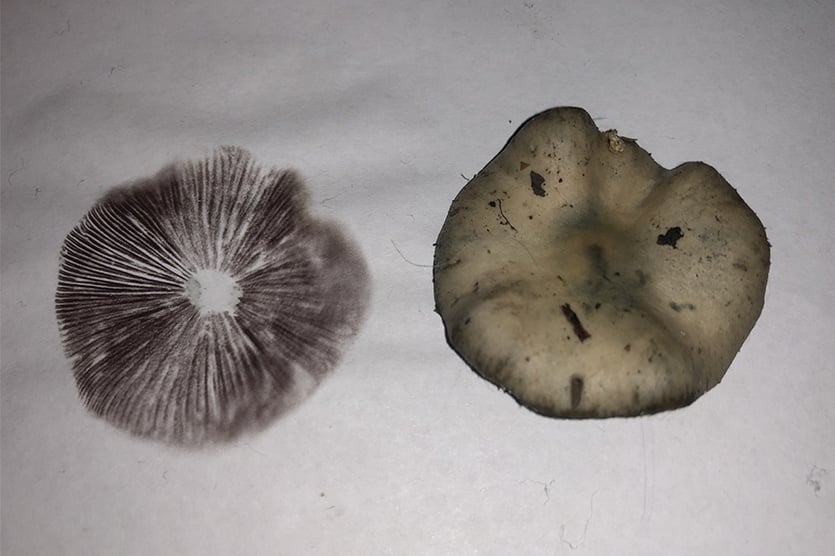
All Psilocybe bruise blue; in fact, it’s one of their most discernable characteristics. Bruising may take little time to appear in some species; some species barely bruise, but species like the Wavy Cap bruise readily. Next, making a spore print is a helpful mushroom identification technique. But, its important to avoid making a guess about a species’ identity based on a spore print or blue bruising alone. The presense of both, along with observations about other psilocybe characteristics, are needed to make a safe identification.
To make a spore print, you simply remove the cap of a harvested mushroom and place it face-down under a cup on a piece of foil. Within 24 hours, spores will have fallen onto the paper in a unique pattern. (Learn the specifics on making a proper and safe spore print here.) Psilocybe spores should be purple-black in color. In addition to purple-blue spores—a featured shared by some poisionous lookalikes mentioned above—it’s also important to look for other discernable features, like a separable pellicle and fibrous stems. Post photos to Shroomery for identification help or local Facebook Psilocybe groups.

Another important adage? If in doubt, throw it out. As well as getting to know the species you are looking for, get to know the potential look-alikes. If you think you have been poisoned, phone your local emergency hotline. You can access information about poisoning by calling your local poisons hotline.
How to Grow cyanescens Outdoors
Psilocybe cyanescens grow on various hardwoods such as Alder chips (Alnus rubra) or other woody mulches. They will readily grow in urban garden beds mulched with a variety of wood chips. Spore prints and spore syringes are readily available through underground communities on forums like Shroomery and online distributors. Cultivators can also use simple methods of tissue culturing onto cardboard or burlap. Keep in mind the cultivation of P. cyanescens is illegal in many countries and considered “manufacture.”
Wavy caps grow readily within mulched garden beds; they like shady areas with good moisture. They are known to grow near rhododendrons, rose bushes, and azaleas. This is not uncommon with the wood-loving psilocybes, with P. azurescens, and P. subaeruginosa, also known to do well in urban environments. The methods the Aussies use to make subaeruginosa wood chip beds will work perfectly for wavy caps!
P. cyanescens can grow on various plant or wood-derived substrates: compressed sawdust blocks, fire pellets, or the free garden mulch from your council refuse area. The same techniques used to grow mushrooms, such as Stropharia rugosoannulata or Lepista nuda, as described in Stamets’ book Mycelium Running, can be adapted to grow a variety of wood-inhabiting species. They can be started in small batches, then expanded, and in time be used to set up garden beds.
Psilocybe cyanescens Effects: Wood-Lovers Paralysis
Psilocybe cyanescens comes with a word of caution—as with P. azurescens and related species, wavy caps may cause a phenomenon known as Wood Lovers Paralysis (WLP). In recent years there have been increasing discussions in forums such as The Shroomery, and Facebook groups dedicated to identifying Psilocybes that may produce this interesting effect. To date, the effect has been reported from wood-inhabiting species of Psilocybe mushrooms such as P. azurescens, P. cyanescens, P. allenii, and P. subaeruginosa. The reports describe how some people experience a loss of muscle strength and motor control that can persist into the following day. There is currently no satisfactory explanation, and a few theories abound, but a compound called aeruginascin is touted as a possible culprit.
Aeruginascin is very similar in structure to psilocybin, except it contains a third methyl group. One of the main theories is that if aeruginascin undergoes the same dephosphorylation, as in the conversion of psilocybin to psilocin, the resulting compound behaves similarly to bufotenidine. Bufotenidine is a toad venom that is known to cause paralysis. Due to their chemical structure (both contain a third methyl group), neither compound is able to cross the blood-brain barrier and are probably confined to the peripheral circulation in the body, where they affect tissues containing the appropriate receptors.
This paralysis should not be confused with the overwhelming effects of a strong dose of psilocybin, as it can occur at relatively low levels of psychedelic intensity. WLP is a distinct physiological effect. The effect is known to be temporary, usually wearing off after 24 hours, but for the unprepared, it can be an anxiety-inducing experience.

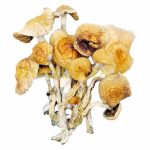
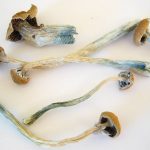


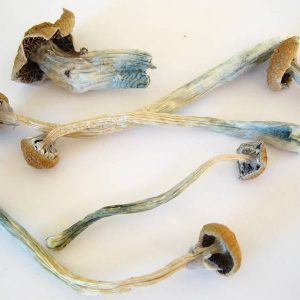
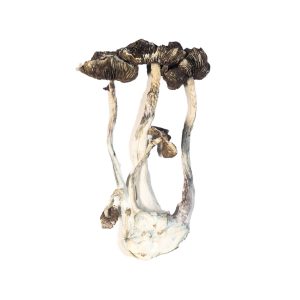
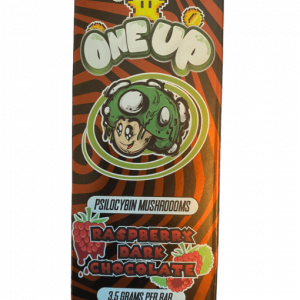
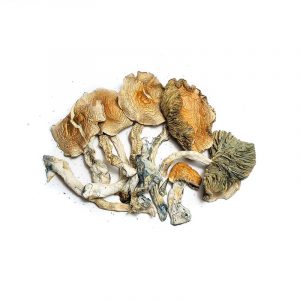
Daniel –
Really good mushrooms!
Daniel –
Great product and fast shipping. A good beginner variety in my opinion. Thank you!
Samantha –
Great quality, fast delivery
Sarah –
Great service and really fast delivery. All in all I’m quite satisfied and the product is top shelf!
Benjamin –
Will come back with comments on actual experience. Product: completely dried, looks as advertised on site. Service: Excellent customer service and speedy delivery!
Lucas –
Love the high on these ones